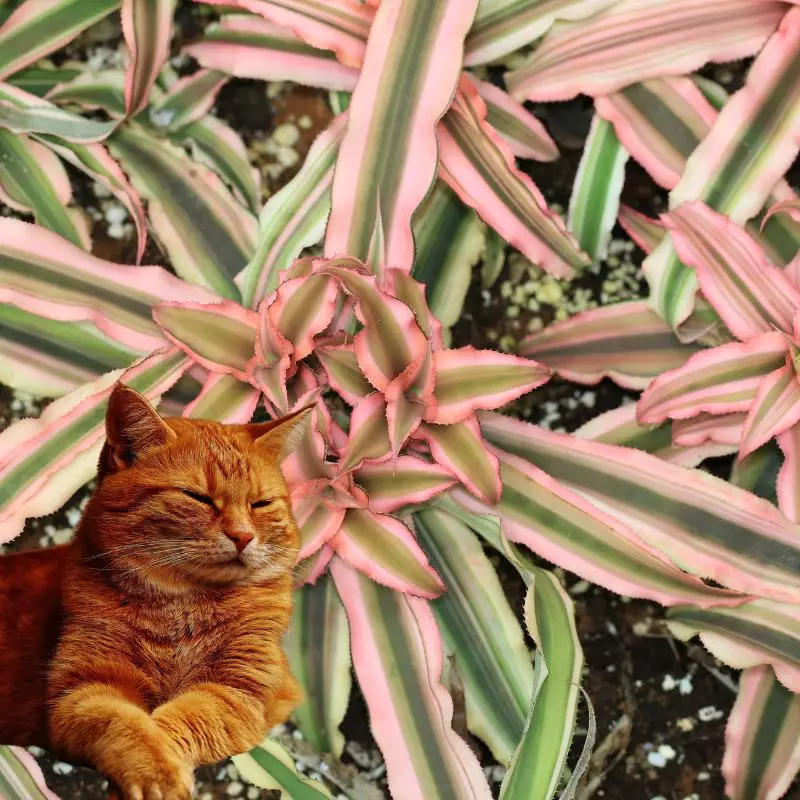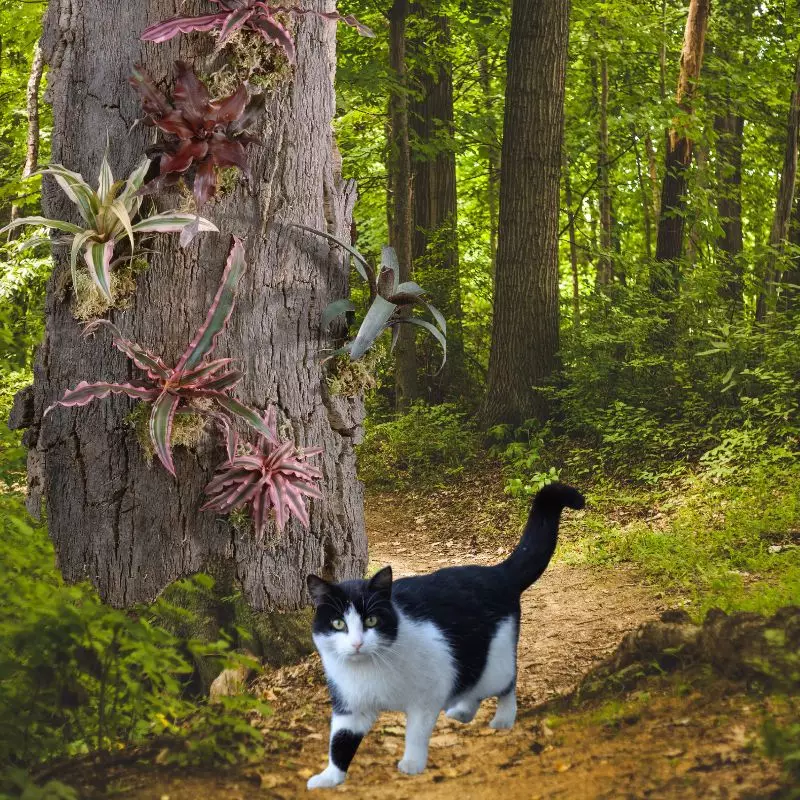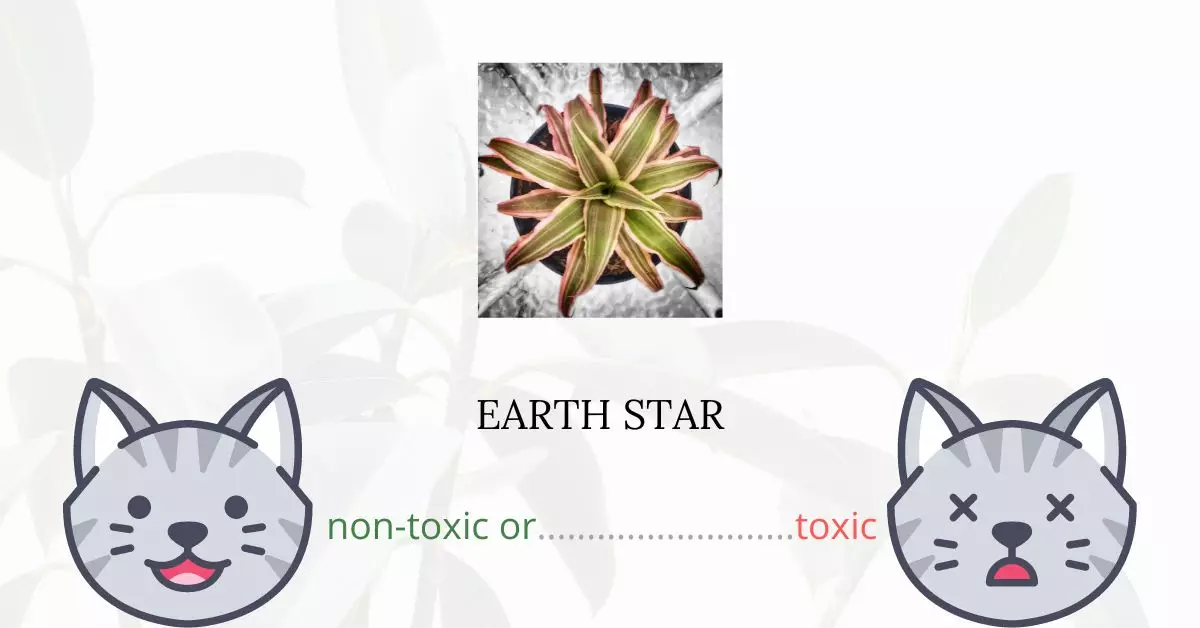No, Earth Star plants are not toxic to cats.
Collaborating closely with a team of experienced DVMs (doctors of veterinary medicine), we’ve ensured that the information provided in this article is both accurate and up-to-date concerning the potential risks of various plants, with a specific focus on the Earth Star in this context. Our comprehensive research includes references from high-authority websites such as the ASPCA and PetMD.
While the American Society for the Prevention of Cruelty to Animals (ASPCA) confirms that Earth Star is not poisonous to cats, it’s important to note that ingestion of any plant might induce vomiting or upset a cat’s stomach.
Can Cats Eat Earth Star?

Although consuming Earth stars are unlikely to be fatal, all plants, including grass, can irritate a cat’s gastrointestinal system and cause it to vomit. Even if the leaves appear delicate in photographs, their foliage and blossoms are extremely sharp when touched, acting like miniature Swiss-army blades.
What is Earth Star?

Earth star (Cryptanthus Bivittatus) is a tropical plant belonging to the Bromeliaceae family. Starfish plant and Red Star Bromeliad are some of their common names.
Earth stars are terrestrial, meaning they are grown in organic soil. Because the blossoms are hidden between the leaves, Cryptanthus means “hidden flower” in Greek. The popular name, earth star, comes from the plant’s form. They are available in a wide range of forms, colors, patterns, and sizes.
Since these easy-to-care-for plants are native to Brazil, they thrive in a damp, humid environment. They will dry out if you put them near heat or an air vent. Earth stars, like all bromeliads, will bloom once and then die. The parent plant will produce “pups,” which are miniature clones of the original plant that develop in the middle or base. The “pups” can simply be separated from the parent plant and transplanted into potting soil.
Keeping Cats Away From Earth Star

Earth Stars flourish in humid environments similar to those found in their natural jungle habitat. They are ideal for a plant terrarium because of their need for humidity. This might be anything from a terrarium to a cookie jar, as long as it keeps moisture within without being entirely sealed. If you don’t want to grow your plant in a terrarium, any form of regular planter would suffice. Remember to keep it out of reach of your cat in either case.
Cats dislike being wet. You can’t constantly be on the lookout, but if your pet wanders into a prohibited area, simply spray them with a water bottle. This is the most basic of all the home remedies. If you keep repeating this method, they will stop coming back to the location. This isn’t a foolproof method of repelling them, but it will assist with the training.
Plants to Avoid For Your Cats
If you are a cat owner and unsure if the plants growing in your yard are harmful to your cats, check out this list of toxic plants for cats. You can also check our list of non-toxic plants for cats.





